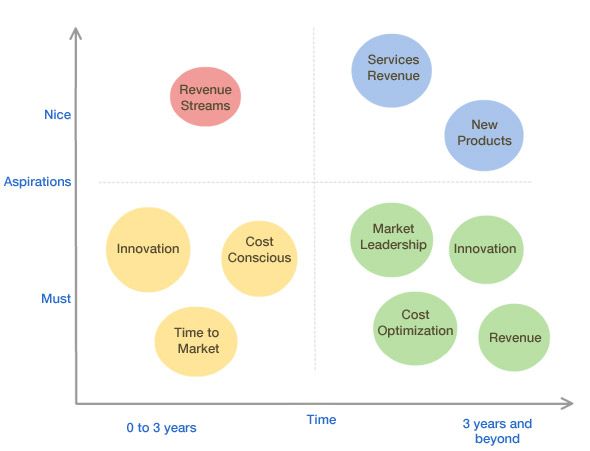When I think of distributed innovation, the first thing that comes to mind is the meeting etiquette that a round table inspires. A round table has the distinction that all sides of the table are equally better, therefore creating level playing conditions for a conducive discussion. Innovation in itself is pretty boundary less and even stronger, is not an ancestral property. All that matters for innovation to thrive, is the environment around it.
Any ISV wants to differentiate itself from others in what and how they do it. There is also a big ‘why’ behind what they do, in most of the cases they want to change the world with it, and sometimes they even do. For example, the concept of an App Store and the possibility to develop apps like crazy, is one such game changer. However, the whole nuance of being a successful software product company is a journey tightly coupled with dilemmas. The aspirations, challenges and opportunities for an ISV occur differently at different stages of the company’s life cycle.
The figure below is a typical illustration of a company’s journey that the entrepreneur has to make right decisions about.

Need for innovation in ISV business is the strongest– to be able to do things differently if not doing different things altogether. Coupled with the aspiration to innovate, is the need to be in the right market at the right time. It is a game of mining most valuable resources simultaneously: innovation, capability and time
Thinking further on the App store and the app concept- it is a perfect example of distributed innovation. A platform that is enabling literally anybody from anywhere to develop something, put it on the store without worrying about the deployment, reach and availability. The whole concept has lowered the threshold of constraints for an intelligent person, to be able to focus on innovation that the person is greatly capable of doing.
What Toyota has done in its radical and trend setting manufacturing process is to integrate its partners and suppliers tightly into their way of working, the Toyota way! For example, the so commonly used cross-dock solution in several industries worked differently for Toyota, just because they approached their partner by sharing knowledge and caring for their development. Toyota simply extended their assembly line with this concept. In other words, they extended their innovation capability by nurturing their partners beyond their walls, and multiplied their benefits as an enterprise.
I think there is a lot to learn from the process innovation of Toyota manufacturing and innovations like that of App store. While Toyota cuts through the concrete head syndrome of ‘not invented here’, App store is an example of anything, anybody from anywhere.
If we apply these concepts to an ISV in its company life cycle, it is essential for an ISV to think of innovation possibilities beyond its own company walls. Building software products is quite a tough hobby, easier said than done. With the right partner who can understand the product building business and willing to be part of the innovation eco-system, the ISV can gain from speed of execution.
It is important to take note of important elements to make such a distributed innovation possible:
- Trust: Everything that takes to make it work
- Transparency: Of systems, process, people, norms and plans
Embracing the path of distributed innovation is a combination of trust and transparency. The result of consistently applying this principle will boost the innovating power and the momentum together.
I strongly believe that such a distributed innovation setup will achieve the competitive advantage for ISV companies. I also strongly believe that the need for more ISVs to emerge is also high.




